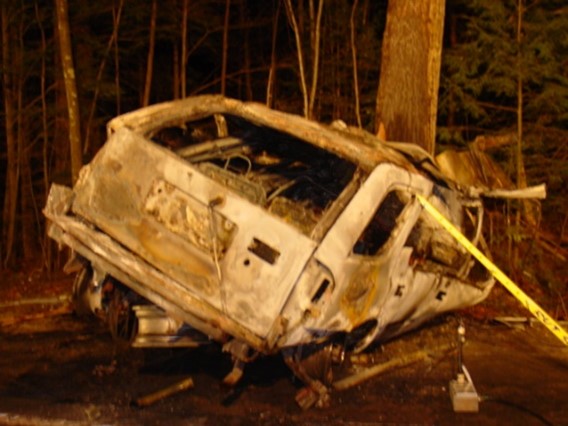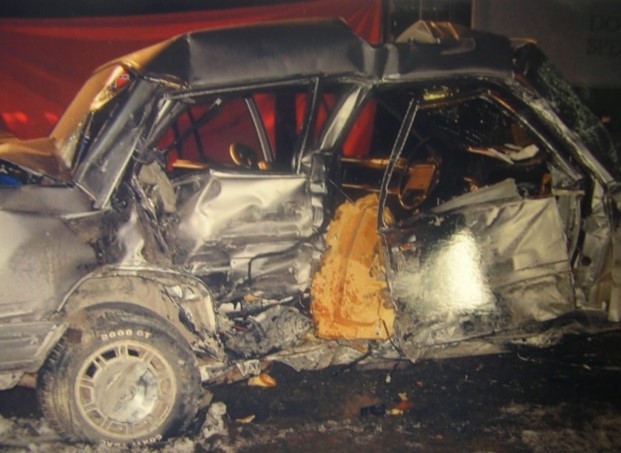Dr. Andrew is presenting at the Colby College Seminar on Forensic Sciences
Haddon’s Matrix can be utilized by the crash investigator and forensic pathologist alike in an effort to interpret injury patterns and circumstances of vehicular crashes. The incident is divided into pre-crash, crash and post-crash phases with each subdivided into considerations of the victim, the vehicle and the environment. Elements such as driver experience, impairment/distraction, size of passenger compartment, functional status of safety devices, impact with other vehicles, immersion, fire and others are included in this analysis.

Crash type itself is important with head-on or near head-on crashes accounting for 67% of collisions and 55% of fatalities. Rib cage injuries make up nearly a third of all injuries but visceral injuries to the lungs, heart, liver and spleen, in descending order of frequency have more fatal potential.
Patterned injuries may result from the steering wheel or column, elements on the dashboard and/or instrument panel, toepan, compartment intrusion, seat belts and airbags. The latter two are designed to work in tandem and occupants in a crash wherein there is airbag deployment, but no seat belt use are at higher risk for potentially fatal injury. So too is the “out of position” passenger situated too close to the point of airbag release into the passenger compartment.
Automotive glass, ejection and car fires raise other interpretive issues for the investigator and the forensic pathologist. Though they can be catastrophically fed by fuel, most vehicular fires are ignited by mechanical or electrical failures of malfunctions.

Occasionally the manner of death may be questioned in a vehicular crash and the forensic pathologist can be invaluable in sorting out natural, suicidal or homicidal manners of death behind the wheel.
Pedestrians and motorcyclists pose another set of interpretive issues related to patterned injuries due to bumpers, grills, fenders, mirrors, etc. There are also issues of frontal versus lateral versus rear impacts, vehicular speed and whether the pedestrian was “run over” or “run under.”
Sorting out the circumstances of a fatal crash is a team effort, requiring the expertise of numerous disciplines. The forensic pathologist is an important, but sometimes overlooked member.
Link to Colby College Seminar on Forensic Sciences
https://www.colby.edu/specialprograms/forensics/
The above lecture will be on Wednesday 7/28 at 8:30 AM

